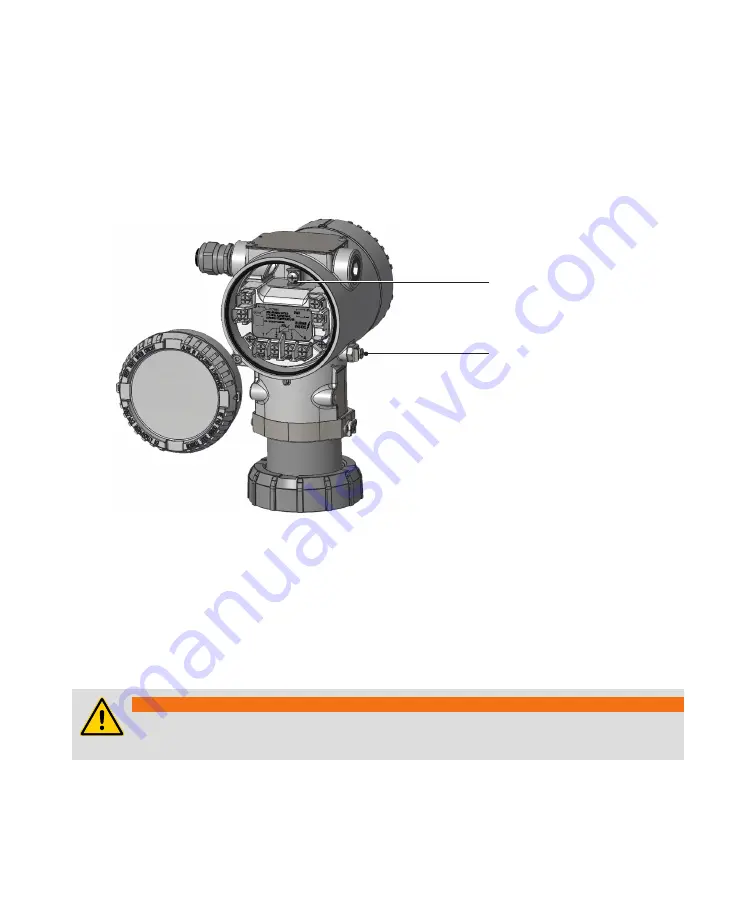
Installing the LWT
27
Grounding the instrument
The LWT must be grounded in accordance with national electrical codes, using a protective earth (PE)
terminal by means of a short connection to an equipotential bonding. The equipotential bonding
conductor must have a maximum cross-section of 4 mm² (12 AWG).
PE terminals are available inside and outside the instrument housing (see Figure 18). Both terminals are
electrically interconnected.
—
Figure 18
Position of the two PE terminals
External PE terminal
Internal PE terminal
If using the external PE terminal, you must
connect the grounding wire to the monitored vessel.
When grounding the LWT with a shielded wire, connect the wire to the PE terminal located inside the
housing.
That shielded wire should only be grounded at one end, not both.
The most effective way to ground the LWT housing is a direct connection to a ground with a maximum
impedance of 5 mΩ.
Outside installations or installations exposed directly or indirectly to lightning discharges shall have
a secondary lightning protection module. Use of a protected terminal block in combination with a
lightning arrestor module is mandatory for the continuous protection of users and installations.
WARNING
The terminal block needs to be replaced if the installation shows any sign of damage
resulting from direct or indirect lightning discharges.
Summary of Contents for LWT300 series
Page 1: ... USER GUIDE LWT300 series Guided wave radar level transmitter Modbus ...
Page 36: ...Page intentionally left blank ...
Page 40: ...Page intentionally left blank ...
Page 66: ...Page intentionally left blank ...
Page 70: ...Page intentionally left blank ...
Page 76: ...Page intentionally left blank ...
Page 96: ...Page intentionally left blank ...
Page 98: ...Page intentionally left blank ...
Page 104: ...Page intentionally left blank ...
Page 105: ...Page intentionally left blank ...
Page 106: ...Page intentionally left blank ...
Page 107: ......
















































